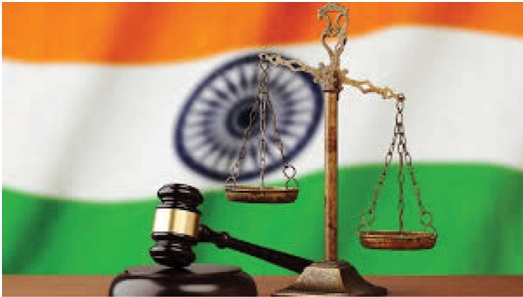Latest News: Justice DY Chandrachud has become the 50th Chief Justice of India.
The former Chief Justice of India Uday Umesh Lalit finished his tenure on 8th November 2022. Justice DY Chandrachud is the next and current Chief Justice of India starting from 9th November 2022.
The Chief Justice of India is the head of the country’s judiciary. He, together with thirty other judges, presides over India’s Supreme Court. The CJI is chosen as a Judge of the Supreme Court and subsequently recommended for the position of Chief Justice of India by the retiring CJI, as per Article 124 of the Indian Constitution.
The List of Chief Justices of India (1950-2024) is included in this article, along with their terms of office. Candidates studying for different Government examinations should be familiar with CJI since questions based on the ‘CJI’ are asked in the Static GK section of the General Awareness Section.
Procedure
The Memorandum of Procedure (MoP) between the government and the judiciary lays out the actual procedure for appointing the next CJI. According to the MoP, the CJI shall be appointed by the most senior Supreme Court judge who is judged suitable to assume the position.
The procedure is started by the Union Law Minister asking the outgoing CJI’s suggestion at a “suitable period,” as per the MoP. If the current Chief Justice of India has any reservations regarding the senior-most judge’s fitness to hold the post of Chief Justice of India, he can contact the collegium.
According to the MoP, “the Law Minister will make a proposal to the Prime Minister, who will advise the President on the appointment.” Whenever the government disagrees with the existing CJI’s proposal, the MoP remains silent.
Roles & Responsibilities of CJI
The Chief Justice of India (CJI) has a wide range of authorities and responsibilities:
- The President and Governors are sworn in.
- The President of India consults with the CJI on appointing justices to the Supreme Court and the High Courts.
- Ad hoc Supreme Court justices can be appointed under Article 127 of the Constitution.
- The Supreme Court is where the retired judges should be appointed.
- The CJI can move the Supreme Court’s seat from Delhi to any other location with the president’s consent.
- The Supreme Court’s officials and employees shall be appointed by the CJI.
- The CJI has the effect of transferring justices from one High Court to another.
- A financial disagreement between the Centre and the states can be resolved by an arbitrator appointed by the CJI.
| NAME | TENURE |
| H.J Kania | 26th Nov 1950 – 6th Nov 1951 |
| M. Patanjali Sastri | 7th Nov 1951 – 3rd Jan 1954 |
| Mehr Chand Mahajan | 4th Jan 1954 – 22nd Dec 1954 |
| Bijan Kumar Mukherjea | 23rd Dec 1954 – 31st Jan 1956 |
| Sudhi Ranjan Das | 1st Feb 1956 – 30th Sept 1959 |
| Bhuvaneshwar Prasad Sinha | 1st Oct 1959 – 31st Jan 1964 |
| P. B. Gajendragadkar | 1st Feb 1964 – 15th Mar 1966 |
| Amal Kumar Sarkar | 16th Mar 1966 – 29th Jun 1966 |
| Koka Subba Rao | 30th Jun 1966 – 11th April 1967 |
| Kailas Nath Wanchoo | 12th April 1967- 24th Feb 1968 |
| Mohammad Hidayatullah | 25th Feb 1968 – 16th Dec 1970 |
| Jayantilal Chhotalal Shah | 17th Dec 1970 – 21st Jan 1971 |
| Sarv Mittra Sikri | 22nd Jan 1971 – 25 Apr 1973 |
| A. N. Ray | 26th Apr 1973 – 27th Jan 1977 |
| Mirza Hameedullah Beg | 29th Jan 1977 – 21st Feb 1978 |
| Y. V. Chandrachud | 22nd Feb 1978 – 11th Jul 1985 |
| P. N. Bhagwati | 12th Jul 1985 – 20th Dec 1986 |
| Raghunandan Swarup Pathak | 21st Dec 1986 – 18th Jun 1989 |
| Engalaguppe Seetharamaiah Venkataramiah | 19th Jun 1989 – 17th Dec 1989 |
| Sabyasachi Mukharji | 18th Dec 1989 – 25th Sept 1990 |
| Ranganath Misra | 26th Sept 1990 – 24th Nov 1991 |
| Kamal Narain Singh | 25th Nov 1991 – 12th Dec 1991 |
| Madhukar Hiralal Kania | 13th Dec 1991 – 17th Nov 1992 |
| Lalit Mohan Sharma | 18th Nov 1992 – 11th Feb 1993 |
| M. N. Venkatachaliah | 12th Feb 1993 – 24th Oct 1994 |
| Aziz Mushabber Ahmadi | 25th Oct 1994 – 24th Mar 1997 |
| J. S. Verma | 25th Mar 1997 – 17th Jan 1998 |
| Madan Mohan Punchhi | 18th Jan 1998 – 9th Oct 1998 |
| Adarsh Sein Anand | 10th Oct 1998 – 31st Oct 2001 |
| Sam Piroj Bharucha | 1st Nov 2001 – 5th May 2002 |
| Bhupinder Nath Kirpal | 6th May 2002 – 7th Nov 2002 |
| Gopal Ballav Pattanaik | 8th Nov 2002 – 18th Dec 2002 |
| V. N. Khare | 19th Dec 2002 – 1st May 2004 |
| S. Rajendra Babu | 2nd May 2004 – 31st May 2004 |
| Ramesh Chandra Lahoti | 1st Jun 2004 – 31st Oct 2005 |
| Yogesh Kumar Sabharwal | 1st Nov 2005 – 13th Jan 2007 |
| K. G. Balakrishnan | 14th Jan 2007 – 12th May 2010 |
| S. H. Kapadia | 12th May 2010 – 28th Sept2012 |
| Altamas Kabir | 29th Sept 2012 – 18th Jul 2013 |
| P. Sathasivam | 19th Jul 2013 – 26th Apr 2014 |
| Rajendra Mal Lodha | 27th Apr 2014 – 27th Sept 2014 |
| H. L. Dattu | 28th Sept 2014 – 2nd Dec 2015 |
| T. S. Thakur | 3rd Dec 2015 – 3rd Jan 2017 |
| Jagdish Singh Khehar | 4th Jan 2017 – 27th Aug 2017 |
| Dipak Misra | 28th Aug 2017 – 2nd Oct 2018 |
| Ranjan Gogoi | 3rd Oct 2018 – 17th Nov 2019 |
| Sharad Arvind Bobde | 18th Nov 2019 – 23rd Apr 2021 |
| Nuthalapati Venkata Ramana | 23rd Apr 2021 – 26th August 2022 |
| Uday Umesh Lalit | 27th August 2022- 8th November 2022 |
| Justice DY Chandrachud | Since 9th November 2022 |
Important Facts Regarding ‘CJI’
- The Chief Justice of India is appointed by the President of India, and the CJI can serve until he or she reaches the age of 65. In addition, the CJI can only be removed by Parliament through an impeachment procedure.
- The President of India accepts the Chief Justice of India’s resignation. The Chief Justice of India is sworn in by the President of India.
- The Chief Justice of the Supreme Court is paid a monthly salary of Rs.280,000 plus additional perks. The Salary of the Chief Justice of the Supreme Court is governed by Article 125 of the Constitution.
- Mr Sir Maurice Gwyer was India’s first Chief Justice (before to independence). He assumed command on October 1, 1937, and served until April 25, 1943. In the pre-independence era, Mr M Gwyer was the Chief Justice of India. The first (Indian) Chief Justice of India was Justice Harilal Jekisundas Kania.
- From November 21, 1991, until December 12, 1991, Kamal Narain Singh served as the Supreme Court’s Chief Justice for only 17 days.
- Justice Y. V. Chandrachud, who served for 2696 days, is India’s longest-serving Chief Justice.
- Fatimah Beevi was India’s first female judge and the first woman Supreme Court Judge. She was born in Kerala and served as the Supreme Court of India from October 6, 1989, to April 29, 1992.
Now, this is the List of Chief Justices of India and their important facts and responsibilities. This information is significant for students who appear for various government exams.











